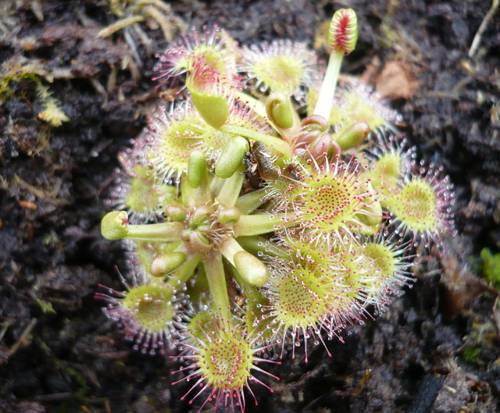
FAQ About Nutrient Partitioning in Indoor Plants

What is nutrient partitioning in indoor plants?
Nutrient partitioning in indoor plants refers to the process by which plants allocate nutrients like nitrogen, phosphorus, potassium, and others to different parts such as roots, stems, and leaves. This allocation is critical for the plant's growth, development, and overall health. Different parts of the plant require different nutrients to perform their specific functions, and efficient partitioning ensures that all plant processes are adequately supported.

Why is nutrient partitioning important for indoor plants?
Nutrient partitioning is crucial for indoor plants as it directly affects their growth and health. Proper nutrient allocation ensures that essential processes such as photosynthesis, respiration, and reproduction are well-supported. Without effective partitioning, plants may not be able to optimize their growth conditions, leading to stunted growth, poor health, and eventually, plant death if nutrient deficiencies become severe.

How do indoor plants manage nutrient partitioning?
Indoor plants manage nutrient partitioning through complex physiological processes that respond to environmental cues and internal signals. Plants absorb nutrients from the soil through their roots, and then these nutrients are transported through the vascular system to where they are needed most at any given time. Hormonal signals help direct nutrient flows, adjusting allocations based on factors like light availability, growth stage, and overall nutrient supply.

Does light affect nutrient partitioning in indoor plants?
Yes, light significantly affects nutrient partitioning in indoor plants. Light influences photosynthesis, which drives the need for and consumption of various nutrients. In low-light conditions, plants may allocate more resources to leaves to capture more light, whereas in bright conditions, they may enhance root growth to support increased photosynthetic activity. The balance depends on the plant species and its specific adaptation to light intensity.

How can improper nutrient partitioning affect indoor plants?
Improper nutrient partitioning can lead to a variety of issues for indoor plants, including nutrient deficiencies, imbalanced growth, and poor overall health. For example, a plant that allocates too many nutrients to its leaves at the expense of the roots may suffer from structural instability. Conversely, excessive root growth without sufficient leaf development can limit the plant's ability to perform photosynthesis efficiently.

What role do hormones play in nutrient partitioning for indoor plants?
Hormones play a critical role in nutrient partitioning by regulating the growth and development of indoor plants. They help control where nutrients are allocated within the plant. For example, auxins promote shoot growth by directing nutrients to the stems and leaves, while cytokinins help balance this by encouraging root growth. The interplay between different hormones ensures that nutrient distribution meets the plant's current needs effectively.

Can nutrient partitioning be influenced by growth stages of indoor plants?
Yes, the growth stage of an indoor plant significantly influences nutrient partitioning. Seedlings may prioritize nutrient allocation to leaves for photosynthesis, while a mature plant might direct more nutrients to flowers or fruits to support reproduction. Understanding these shifts allows growers to optimize nutrient supply to match the plant's developmental needs, ensuring healthy growth and productivity.

What nutrients are most commonly partitioned in indoor plants?
The most commonly partitioned nutrients in indoor plants include nitrogen, phosphorus, and potassium. Nitrogen is vital for leaf and stem growth, phosphorus supports root development and flowering, and potassium is essential for overall cellular function and disease resistance. Additionally, micronutrients like calcium, magnesium, and sulfur, though needed in smaller amounts, are also crucial for healthy plant growth.

Can nutrient partitioning be affected by soil quality?
Yes, soil quality greatly affects nutrient partitioning in indoor plants. Poor soil quality can restrict the availability of essential nutrients, leading to imbalanced nutrient distribution and deficiencies. To ensure efficient nutrient partitioning, it's important to use high-quality potting soil that contains a balanced mix of nutrients and maintains good structure for root growth and nutrient uptake.

How does nutrient partitioning affect the survival of indoor plants in varied environments?
Nutrient partitioning affects the survival of indoor plants by enabling them to adapt to different environmental conditions. In nutrient-rich environments, plants can grow more vigorously by efficiently distributing nutrients to support various plant functions. In contrast, in stressful environments, effective nutrient partitioning can help plants prioritize survival strategies, such as directing more resources to the roots for better water and nutrient uptake.

Are there ways to improve nutrient partitioning in indoor plants?
Improving nutrient partitioning in indoor plants can be achieved by ensuring a balanced nutrient supply, proper watering, and adequate light. Regularly testing soil and adjusting fertilization according to the plant's needs can optimize nutrient availability. Additionally, understanding the specific nutrient requirements of different plant species and adjusting care practices accordingly can enhance nutrient partitioning efficiency.

Do different types of indoor plants have different nutrient partitioning strategies?
Yes, different types of indoor plants have unique nutrient partitioning strategies based on their specific growth habits and environmental adaptations. For instance, succulents may prioritize nutrient storage in their leaves for water conservation, while flowering plants may allocate more resources to blooms during their reproductive phase. Understanding these strategies can help in providing tailored care to meet each plant's specific needs.

How do nutrient deficiencies manifest in indoor plants due to poor partitioning?
Nutrient deficiencies in indoor plants due to poor partitioning can manifest as yellowing leaves (chlorosis), inhibited growth, weak stems, and poor root development. These symptoms result from the plant's inability to distribute essential nutrients effectively to the areas where they are most needed. Addressing these deficiencies promptly is critical to restoring plant health and ensuring optimal growth conditions.

Can temperature variations impact nutrient partitioning in indoor plants?
Temperature variations can indeed impact nutrient partitioning in indoor plants. High temperatures may accelerate nutrient uptake and partitioning to the leaves to support increased metabolic activity. In contrast, low temperatures can slow nutrient movement, potentially resulting in deficiencies if the plant is unable to maintain its normal physiological processes. Maintaining a stable temperature is important for balanced nutrient distribution.

What are the signs of effective nutrient partitioning in indoor plants?
Signs of effective nutrient partitioning in indoor plants include robust growth, vibrant leaf color, healthy root systems, and regular flowering or fruiting patterns. Plants that partition nutrients efficiently are better able to meet their physiological demands and adapt to changing environmental conditions, resulting in overall improved health and appearance.

How do water levels influence nutrient partitioning in indoor plants?
Water levels significantly influence nutrient partitioning as water is essential for nutrient solubilization and transport within the plant. Adequate watering ensures that nutrients dissolved in the soil can be absorbed by the roots and distributed efficiently to various plant parts. Overwatering or underwatering can disrupt this balance, leading to nutrient imbalances and affecting overall plant health.

What is the relationship between nutrient partitioning and photosynthesis in indoor plants?
Nutrient partitioning and photosynthesis are closely related, as photosynthesis depends on the efficient allocation of nutrients to the leaves, where it occurs. Key nutrients like nitrogen are critical for the formation of chlorophyll, which is essential for photosynthesis. Efficient nutrient partitioning ensures that leaves have an adequate supply of nutrients to support optimal photosynthetic activity, leading to healthy plant growth.

Can nutrient partitioning adapt in response to stress factors in indoor plants?
Yes, nutrient partitioning can adapt in response to stress factors such as drought, pests, or nutrient scarcity. During stress, plants may reallocate nutrients to prioritize critical functions like root growth for water uptake or increase resistance to pathogens. This adaptability helps indoor plants survive and recover from unfavorable conditions by maintaining essential physiological processes despite external pressures.

What is the impact of fertilizer use on nutrient partitioning in indoor plants?
Fertilizer use can significantly impact nutrient partitioning by influencing the availability of essential nutrients in the soil. Properly balanced fertilizers provide the nutrients plants need to support efficient partitioning, enhancing growth and health. However, improper use of fertilizers, such as over-fertilization, can lead to nutrient imbalances, potentially disrupting nutrient distribution and harming the plant.

How does root architecture influence nutrient partitioning in indoor plants?
Root architecture plays a vital role in nutrient partitioning, as it determines the plant's ability to absorb and distribute nutrients from the soil. A well-developed root system can efficiently access and uptake nutrients, supporting effective partitioning. Variations in root structure, such as dense fibrous roots or deep taproots, influence how plants gather resources and allocate them to various parts to optimize growth and health.
